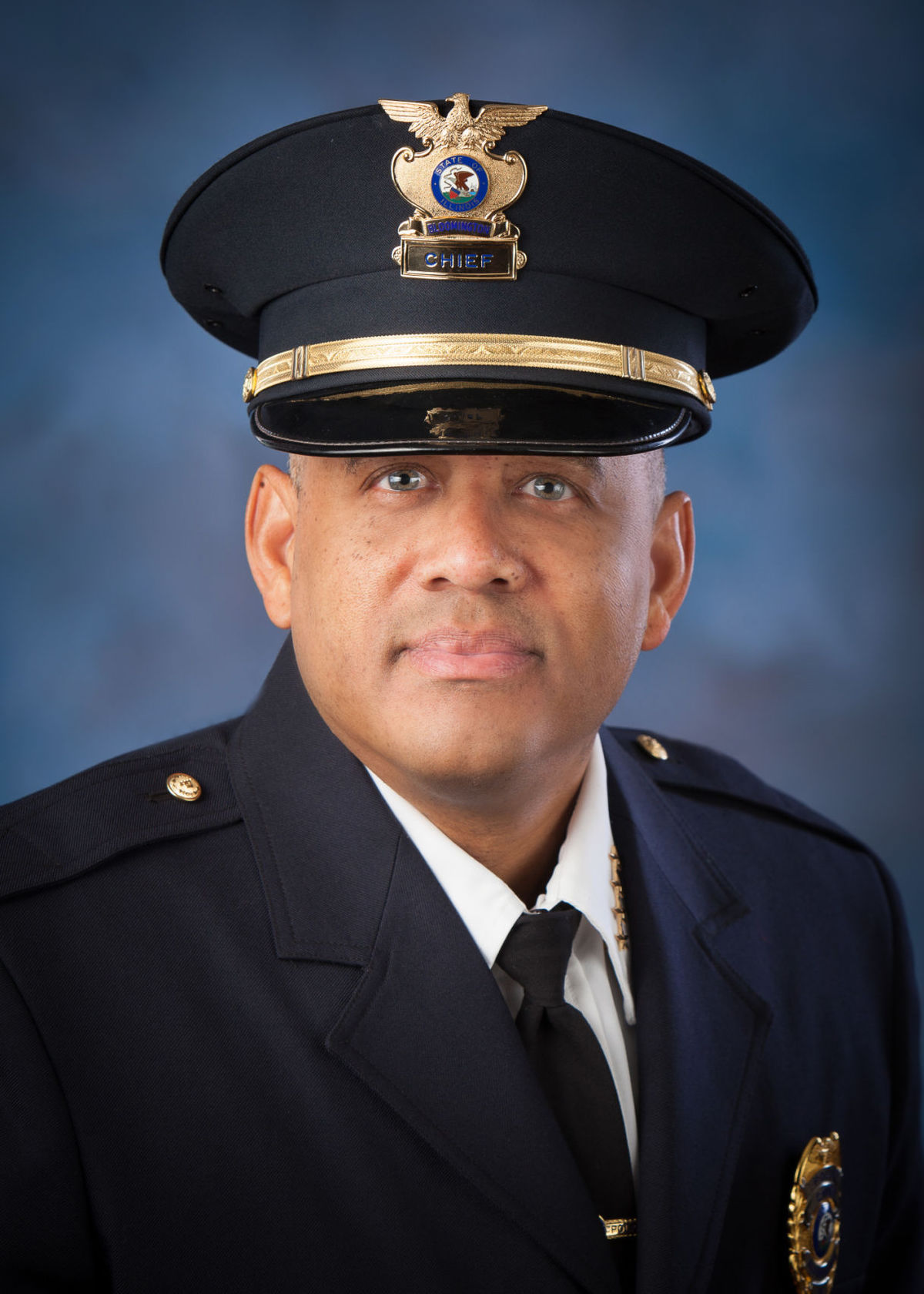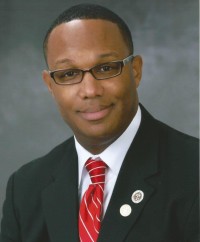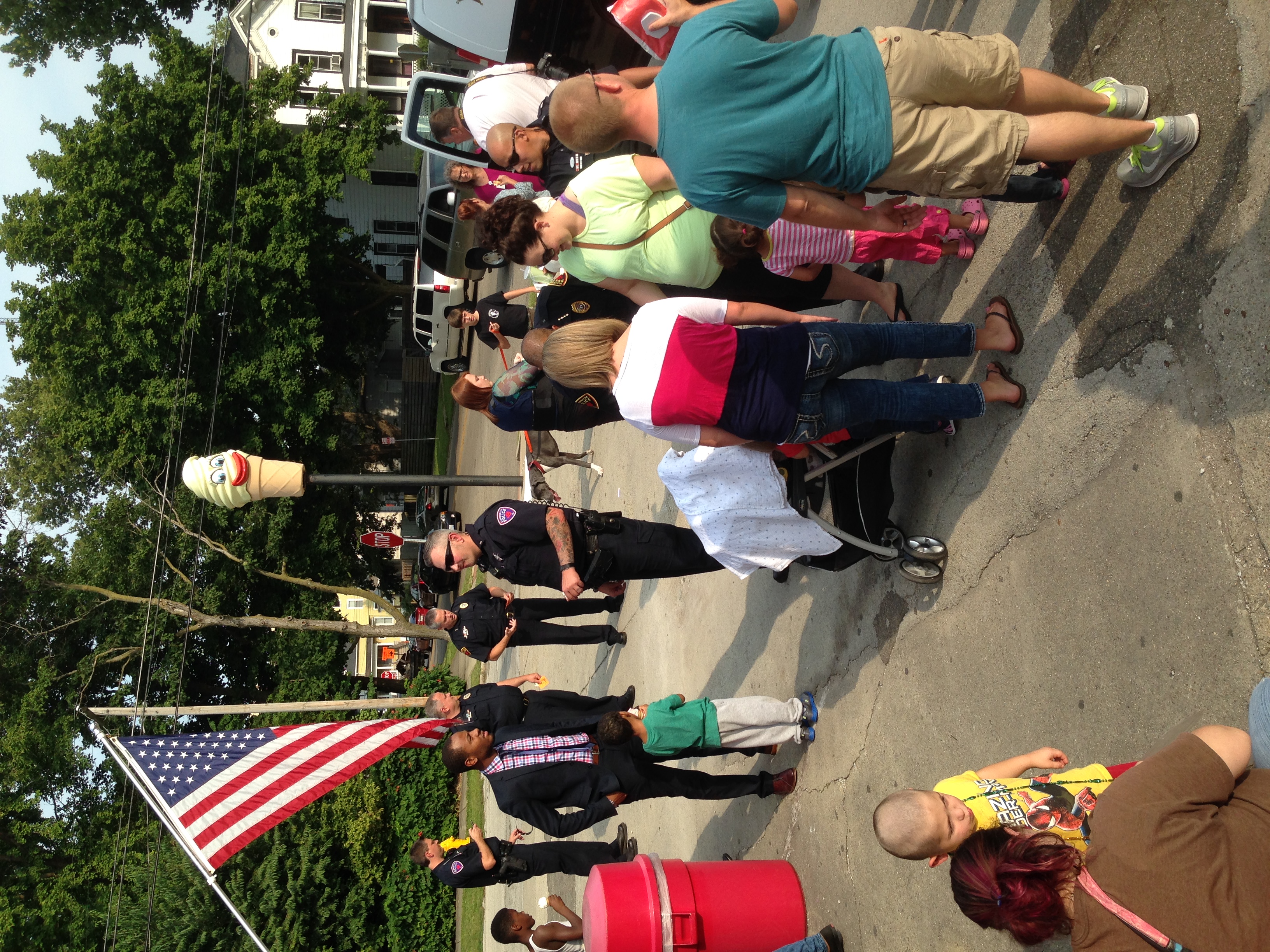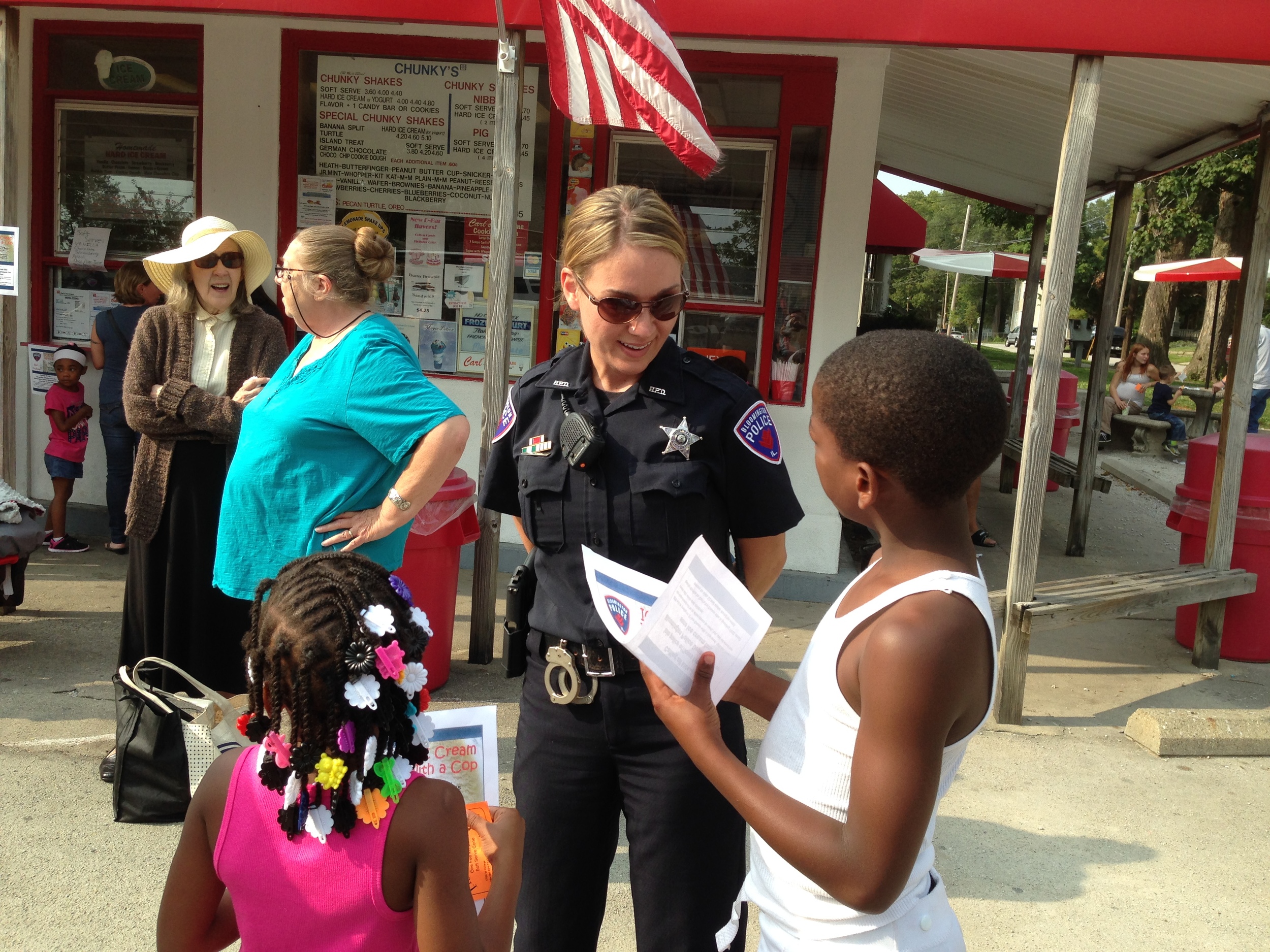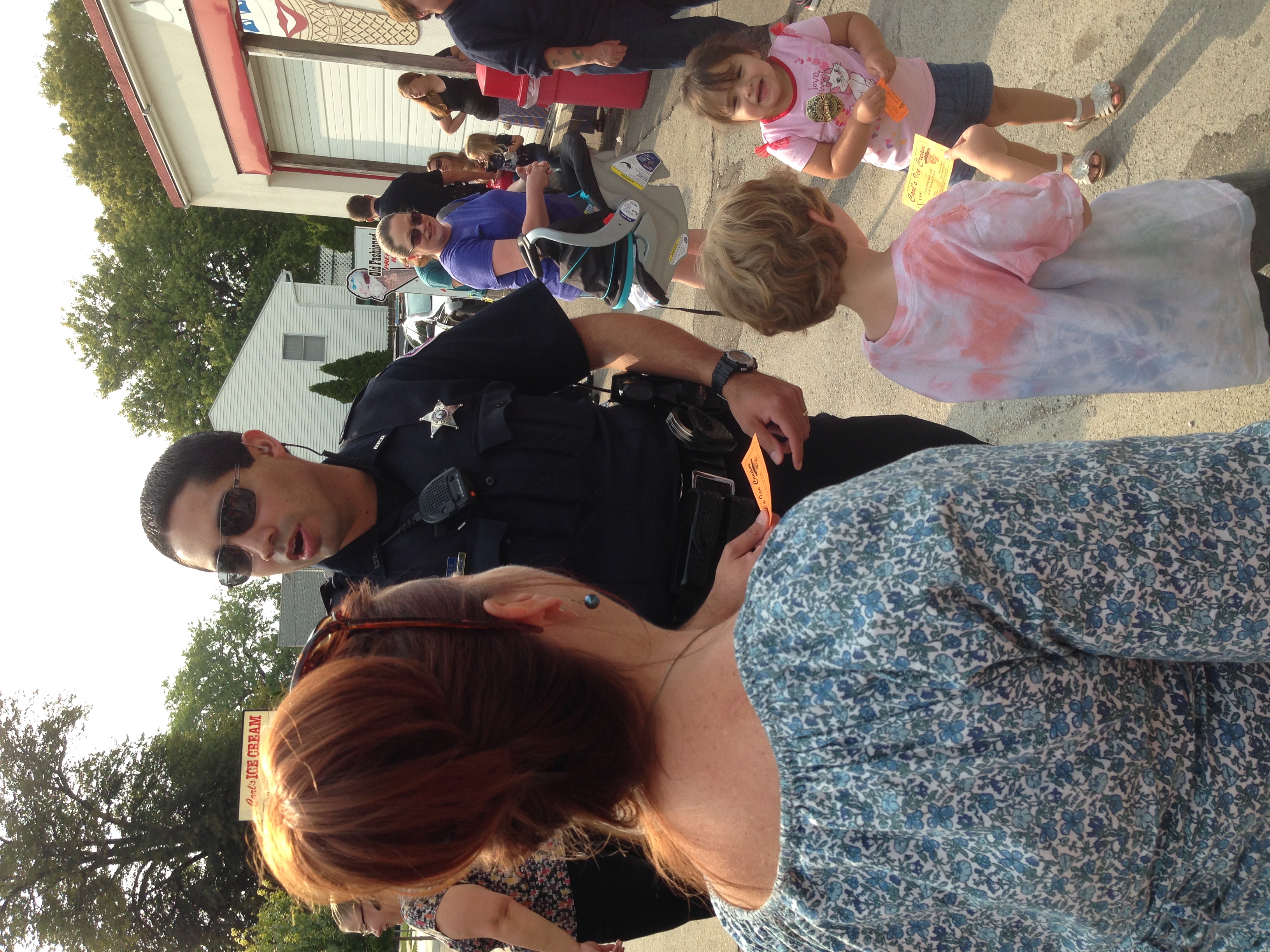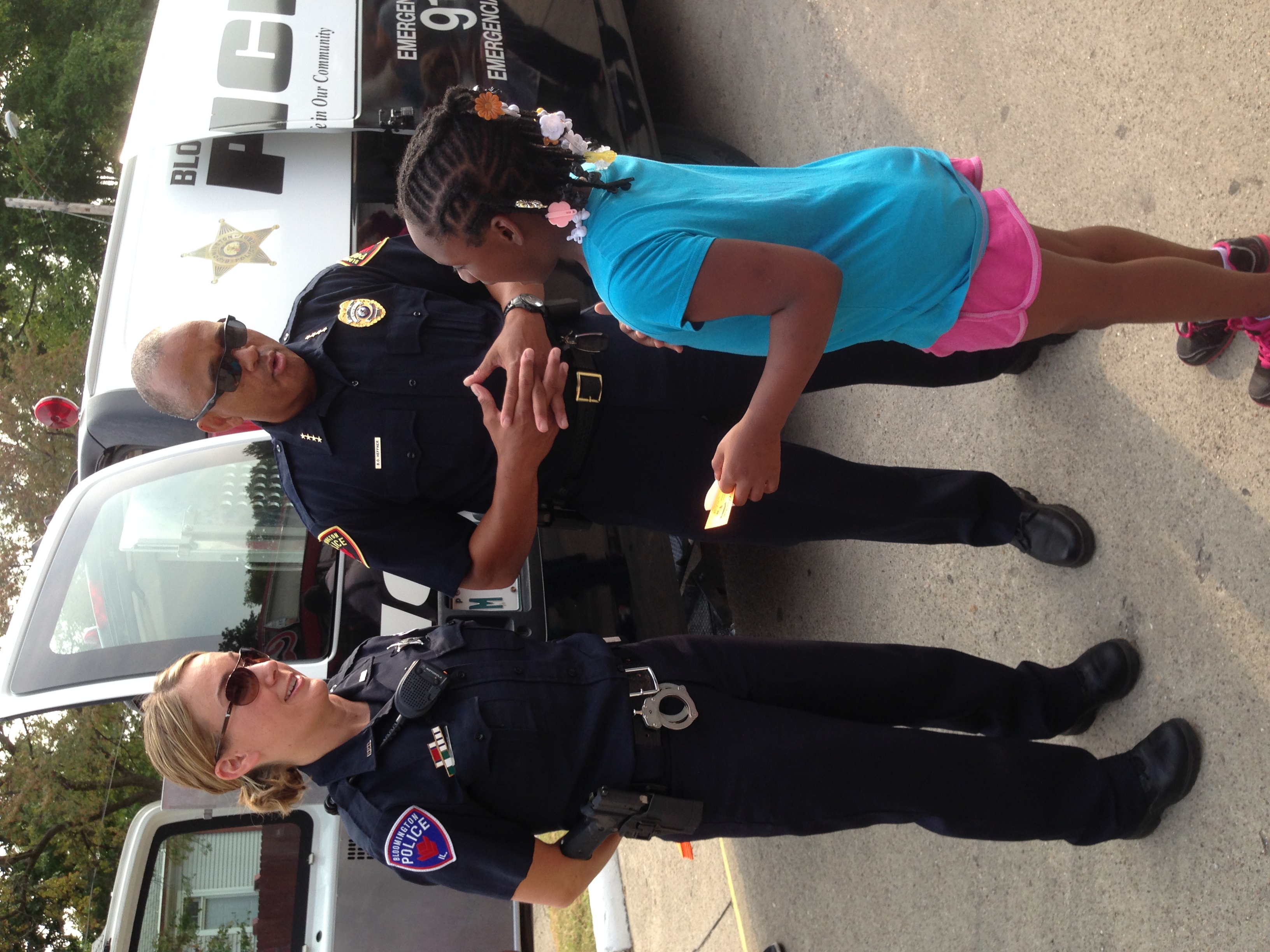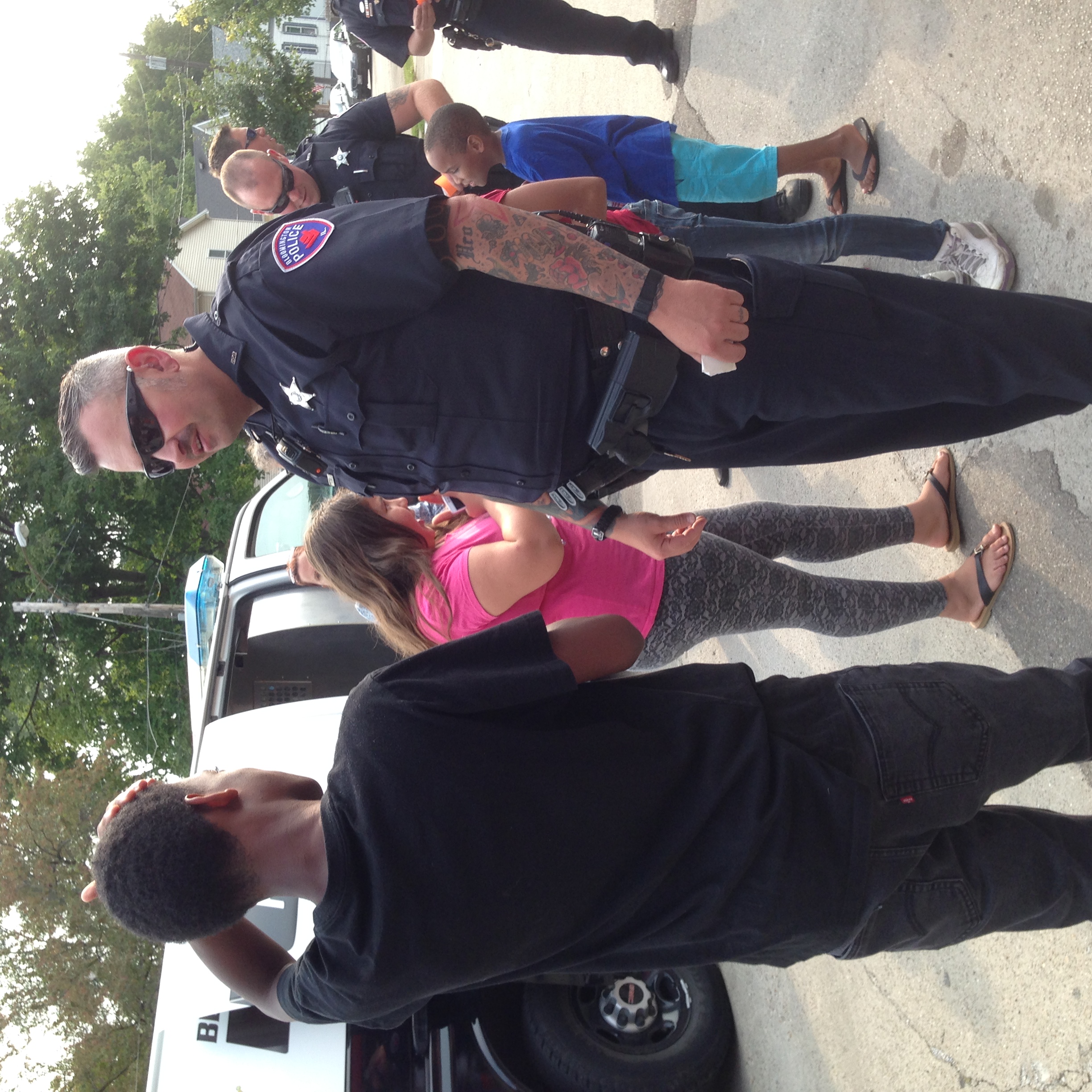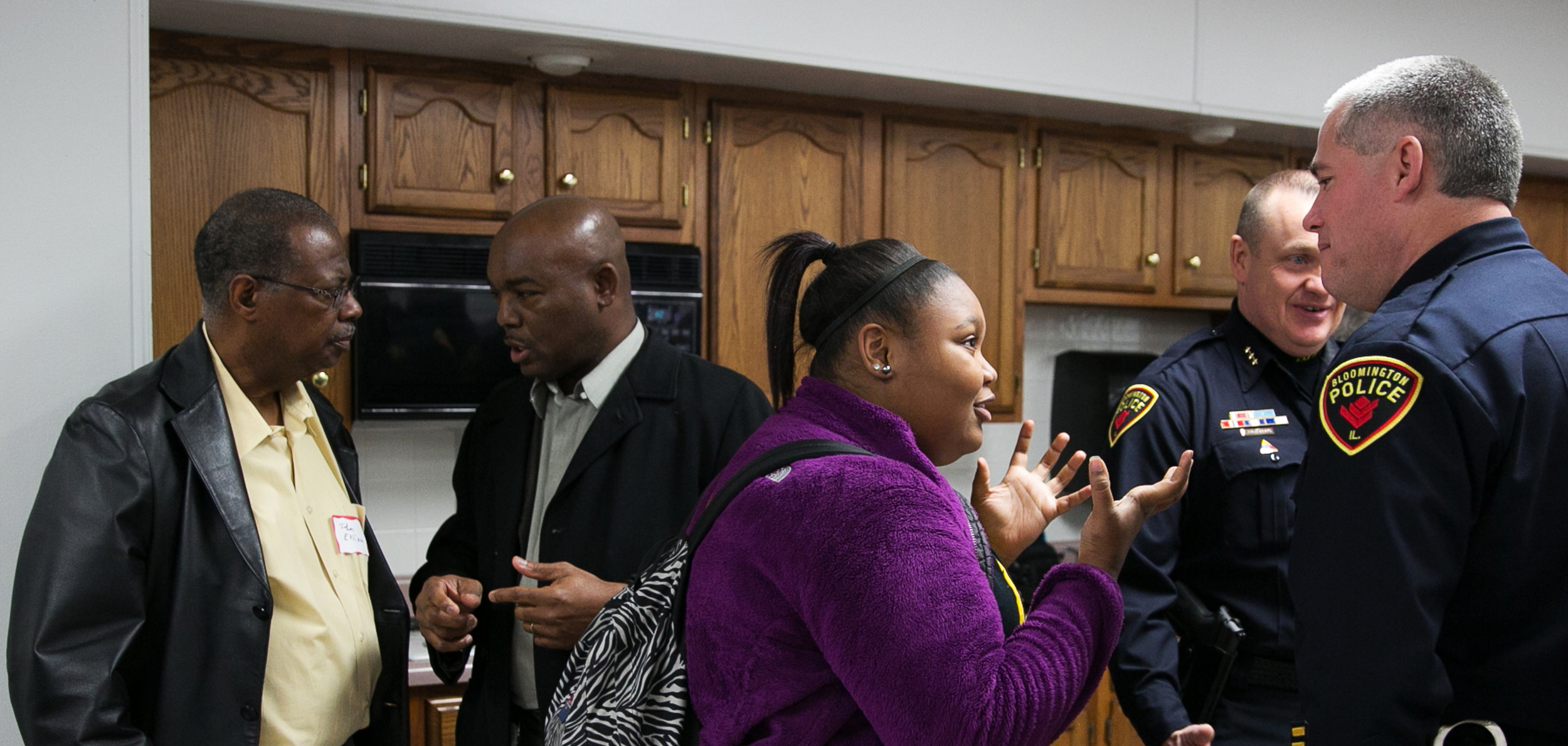Jon Norton
WGLT
The advocacy group Black Lives Matter BloNo has been asking the Bloomington Police Department to adopt "Community Policing" rather than what it characterizes as a "Broken Windows" approach to policing. Broken Windows theory argues that focusing on small crimes such as vandalism and toll-jumping helps create an atmosphere of order and lawfulness, which leads to less serious crimes being committed.
Community policing has a number of core tenants, including assigning officers to specific geographic locations over long periods of time, even decades. It also involves requiring officers to walk or bike their beats as much as possible, and to emphasize problem solving over reactionary policing. Bloomington police chief Brendan Heffner said his department employs all of those tenants, albeit in a limited fashion. For example, he said officers have assigned patrol areas every time they are out.
"We have officers that bid (per their shifts) their patrol areas, so they are actuallyin certain areas for long periods of time, so that helps," said Heffner. "What I think the public doesn't realize is, say, you're an officer on the 3:00 p.m. to 11:00 p.m. shift, or the day shift and you change shifts, your patrol area might change as well."
So those officers may essentially patrol a neighborhood for up to a year, which proponents of community policing might say is short of the desired "years" or even "decades" where an officer can really get to know an area and its residents. As for foot patrols, Heffner said his offers do get out on both foot and bike, and said he would like to increase the time they spend out of their cars in the coming months. He also said officers on foot increases their response time when dispatched to other crimes.
"We encourage officers to get out of their cars when they can to talk and engage with people" said Heffner. "Sometimes people are a little taken back because they've only seen or heard things and never had an officer say hello. And we have some officers who are a little shy about that because of the atmosphere, they don't know how to be treated."
Heffner says he tells his officers to be consistent, in that consistency, professionalism, and being genuine reflects on the officer, and those overtures comes back to the officer.
One of the criticisms of community policing nationwide is that it gets embraced at the upper levels of law enforcement agencies, but the concept itself, such as how how to talk with or approach citizens while on foot patrol doesn't get down to the street level officer. A YouTube video from two years ago filmed by a man walking in west Bloomington has made its rounds on social media. It shows the man and and another interacting with Bloomington police officer who had stopped his car after noticing the two walking. The man filming immediately asked if they were being detained or under arrest as the officer walked up to them. They explained in a direct manner that they don't answer questions from police. The officer explained he wanted to talk with them and get to know them under the guise of community policing. The conversation quickly devolved into the pedestrian clearly stating he didn't trust police, and the officer continuing to talk with the pedestrian in a belittling manor. Heffner said he has been aware of the video for awhile.
"I actually told that officer 'do not stop doing what you were trying to do.' That obviously was not the best contact, but that is not how everyone feels. If you want to know if our officers try to get out there and do that ... they do," said Heffner.
Acknowledging that the conversation was adversarial from both parties, Heffner said his officers have to act in a more professional manor.
"One thing people have to realize is that we are human too. But we try to be above that. Can we do better? Yes we can, and we strive to do that, and we learn from it. And I hope people understand no matter what you think of the video, it was one video. Because we have a LOT of positive contacts with the public," said Heffner.
Click "Listen" below to hear Heffner talk more about how the Bloomington Police Department approached community policing, including his reaction to data released last year showing blacks stopped and frisked more often than whites during the first six months of 2016, despite finding less drugs or illegal weapons on blacks than whites.

